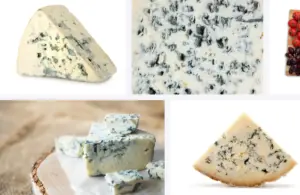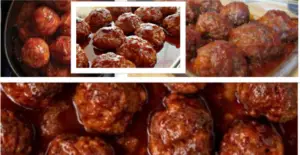What is Iowa famous for food | What to eat in Iowa

- By
- Aparna Patel
- |
- 21 Apr, 2023
- |

Welcome to our post about the culinary wonders of Iowa! When it comes to food, Iowa may not be as well-known as some other states, but it has a rich and diverse food culture that is worth exploring. From classic Midwestern comfort foods to unique regional specialties, Iowa has plenty of delicious dishes to offer visitors and residents alike.
In this post, we will delve into what Iowa is known for food, what to eat in Iowa, and the famous Iowa local food that you simply can’t miss on your next visit. So get ready to tantalize your taste buds and discover the flavors of Iowa!
What is Iowa known for food?
Iowa is famous for its agriculture, and there are many delicious local foods that the state is known for. Here are 10 famous Iowa local foods:
1. Sweet corn
Iowa is known for producing some of the best sweet corn in the country. It’s so popular that the state holds an annual Sweet Corn Festival to celebrate.
Iowa sweet corn is a variety of sweet corn that is grown in the state of Iowa, which is known for its fertile farmland and agriculture. Iowa sweet corn is often referred to as “the best sweet corn in the world” due to its exceptional taste and texture.
The sweet corn is typically harvested in late summer and early fall, and is sold at farmers’ markets and roadside stands throughout Iowa and the Midwest region of the United States. Iowa sweet corn is known for its tender kernels, which are often yellow or white in color, and its sweet, juicy flavor.
Many Iowans consider sweet corn to be a staple of their summer diet, and there are numerous festivals and events held throughout the state each year to celebrate this beloved vegetable. Iowa sweet corn is also popular with foodies and chefs around the world, who use it in a variety of dishes, from salads and soups to salsas and stir-fries.
2. Maid-Rites
A unique sandwich made with loose ground beef that is cooked with onions and served on a bun. Maid-Rites are a local favorite and can be found at many restaurants throughout Iowa.
Iowa Maid-Rites are a type of loose-meat sandwich that originated in the state of Iowa. The sandwich is made with ground beef that is seasoned and cooked until it is crumbly, and then served on a bun with toppings such as mustard, pickles, onions, and cheese.
The Maid-Rite sandwich was first created in Muscatine, Iowa, in the early 1920s by a man named Fred Angell. Angell’s original recipe included a secret blend of spices that gave the meat its distinctive flavor.
The name “Maid-Rite” is a registered trademark of the Maid-Rite Corporation, which was founded in Iowa in 1926 and now operates restaurants across the United States. While the Maid-Rite sandwich is often associated with Iowa, it has become popular in other Midwestern states as well.
In addition to the original Maid-Rite sandwich, there are also variations such as the “Cheese-Rite,” which includes melted cheese on top of the meat, and the “Chili-Rite,” which is served with chili sauce. Maid-Rites are typically served with a side of chips or fries, and are a popular choice for a quick and tasty meal.
3. Breaded pork tenderloin sandwich
A classic Iowa dish, the breaded pork tenderloin sandwich is a large piece of pork that is pounded thin, breaded, and fried. It’s served on a bun with lettuce, tomato, and mayonnaise.
The Iowa Breaded Pork Tenderloin Sandwich is a beloved culinary tradition in Iowa and other parts of the Midwest region of the United States. The sandwich consists of a pork tenderloin that has been pounded thin, breaded with a mixture of flour, breadcrumbs, and spices, and then deep-fried until crispy.
The breaded pork tenderloin sandwich is typically served on a bun that is larger than the meat, so the tenderloin extends beyond the edges of the bun. Toppings such as lettuce, tomato, pickles, and onions are often added to the sandwich, as well as condiments such as mustard and mayonnaise.
The origins of the Iowa Breaded Pork Tenderloin Sandwich are somewhat unclear, but it is believed to have originated in rural Iowa in the 1940s or 1950s. Today, the sandwich can be found in restaurants, cafes, and diners throughout the state of Iowa and other parts of the Midwest, and is often served with a side of French fries or onion rings.
The Iowa Breaded Pork Tenderloin Sandwich has become so popular in Iowa that it has been designated as the state’s official sandwich, and is celebrated with an annual festival called the Iowa Pork Tenderloin Throwdown, which features a competition among local chefs to determine who makes the best pork tenderloin sandwich.
4. Dutch letters
A sweet pastry that is popular in Iowa’s Dutch community. Dutch letters are made with flaky pastry dough and almond paste filling.
Iowa Dutch letters are a type of pastry that originated in the Dutch community of Pella, Iowa. These pastries are made with a flaky, buttery pastry dough that is rolled into a spiral and filled with a sweet almond paste.
The almond paste filling is made from ground almonds, sugar, and egg whites, and is flavored with almond extract. The filling is then rolled up into a cylinder and baked until golden brown.
Iowa Dutch letters are typically served warm, fresh from the oven, and can be enjoyed as a breakfast pastry or as a sweet snack. They are a popular treat in Pella and other Dutch communities in Iowa, and can be found at local bakeries, cafes, and restaurants.
In addition to traditional Dutch letters, there are also variations such as raspberry, blueberry, and chocolate, which feature different types of fillings. The Iowa Dutch letter is considered a cultural icon of Iowa, and is often included in gift baskets and food packages sent to friends and family as a souvenir of the state.
5. Maytag blue cheese
A creamy blue cheese that is made in Iowa. It’s known for its strong flavor and is used in many local dishes, such as salads and burgers.
Maytag Blue Cheese is a type of blue cheese that is produced by the Maytag Dairy Farms in Newton, Iowa. The cheese is made from raw cow’s milk and is aged for at least 60 days.
Maytag Blue Cheese has a creamy, crumbly texture and a sharp, tangy flavor that is characteristic of blue cheese. It is often used in salads, dressings, and dips, and pairs well with fruits, nuts, and cured meats.
Maytag Dairy Farms was founded in 1919 by F.L. Maytag, the son of the founder of the Maytag Corporation. The company began producing Maytag Blue Cheese in the 1940s, and the cheese has since become a beloved Iowa tradition and a favorite of cheese lovers around the world.
Maytag Blue Cheese has won numerous awards for its high quality and distinctive flavor, including the American Cheese Society’s “Best Blue Cheese” award in 2001, 2005, and 2010. Today, Maytag Dairy Farms produces a range of artisanal cheeses in addition to their signature blue cheese, and their products can be found in specialty cheese shops and gourmet markets throughout the United States.
6. Amana ham
A smoked ham that is made in the Amana Colonies, a group of seven villages in Iowa. Amana ham is known for its rich, smoky flavor and is a popular holiday dish.
Amana ham is a type of cured ham that is produced in the Amana Colonies, a group of seven historic villages in eastern Iowa. The Amana Colonies were founded by German settlers in the mid-19th century, and the community has a long history of producing high-quality meats and other foods.
Amana ham is made from the hind leg of a pig that has been cured with salt and smoked over hickory wood. The ham is typically aged for several months, during which time it develops a rich, smoky flavor and a firm, slightly salty texture.
Amana ham is often served as a main course for holiday meals or other special occasions, and is also a popular ingredient in sandwiches and salads. It can be purchased at local meat markets and specialty food stores throughout the Amana Colonies, as well as online.
In addition to Amana ham, the Amana Colonies are also known for their other meat products, including bacon, sausage, and smoked turkey. These meats are all produced using traditional methods and recipes that have been passed down through generations of Amana Colonies residents.
7. Iowa chops
Thick-cut pork chops that are marinated and grilled to perfection. Iowa chops are a local favorite and can be found at many Iowa restaurants.
Iowa chops, also known as Iowa pork chops, are thick, bone-in pork chops that are known for their juicy, flavorful meat. These pork chops are typically cut from the loin of a pig and are often served grilled or pan-fried.
Iowa is one of the top pork-producing states in the United States, and the quality of Iowa chops is attributed to the state’s abundance of corn and soybeans, which are used to feed the pigs. The high-quality diet produces meat that is tender and flavorful, with a high level of marbling that adds to its rich taste.
Iowa chops are often seasoned with simple ingredients such as salt, pepper, and garlic, and are sometimes marinated to enhance their flavor. They can be served as a main course for dinner, and are often paired with sides such as roasted vegetables or mashed potatoes.
Iowa chops are a popular dish in the Midwest and are often featured at local restaurants and diners. They can also be purchased at meat markets and grocery stores throughout Iowa and beyond, and are shipped to customers across the country who want to enjoy the delicious taste of Iowa pork.
8. Iowa Ham Balls
Iowa Ham Balls are a beloved dish in the state of Iowa, known for their sweet and savory flavor. These meatballs are made with a combination of ground ham and ground pork, along with breadcrumbs, eggs, and milk. The mixture is then rolled into balls and baked in the oven until golden brown.
what sets Iowa Ham Balls apart from other meatball dishes is the addition of a sweet glaze made with brown sugar, vinegar, and mustard. The glaze is poured over the meatballs during the last few minutes of baking, creating a sticky and delicious coating.
Iowa Ham Balls are often served as an appetizer or as a main dish with sides such as mashed potatoes and green beans. They are a classic comfort food that has been passed down through generations in Iowa, and are a must-try for anyone visiting the state.
Related Post
9. Kolaches
A sweet pastry that is popular in Iowa’s Czech community. Kolaches are made with a sweet yeast dough and filled with fruit or cream cheese.
Iowa Kolaches are a type of pastry that originated in Czechoslovakia and were brought to Iowa by Czech immigrants in the late 1800s. The pastry is made with a sweet yeast dough and is typically filled with fruit, cream cheese, or other sweet or savory fillings.
The dough for Iowa Kolaches is made with flour, sugar, eggs, butter, and yeast, and is often flavored with lemon zest or vanilla extract. The dough is rolled out and cut into circles, then filled with a variety of fillings, such as apricot, poppy seed, raspberry, cream cheese, or even ham and cheese.
Iowa Kolaches are often served as a breakfast pastry or as a dessert, and are a popular item at bakeries and cafes throughout Iowa. They are also a staple at many church picnics and community events in Iowa, where they are often made by local bakers and sold as a fundraiser.
In addition to being a beloved food in Iowa, Kolaches have also gained popularity across the United States and are now available at bakeries and cafes in many parts of the country.
10. Pella bologna
A type of Dutch-style bologna that is made in Pella, Iowa. Pella bologna is a local favorite and is often used in sandwiches and appetizers.
Pella bologna is a type of sausage that is named after the city of Pella, Iowa. The sausage is made from a blend of beef and pork, and is typically seasoned with garlic, coriander, and other spices.
Pella bologna is known for its distinctive taste and texture, which is achieved through a special smoking process that involves hickory wood. The sausage is smoked for several hours, which gives it a smoky flavor and a firm, slightly chewy texture.
Pella bologna is often sliced thin and served as a snack or appetizer, and is also a popular ingredient in sandwiches and salads. It is sold at local meat markets and specialty food stores throughout Iowa, and is a staple at many Dutch-American festivals and events in the state.
The city of Pella is known for its strong Dutch heritage, and Pella bologna is a traditional Dutch-American food that has been enjoyed by generations of Iowans. Today, it is considered a beloved Iowa food that represents the state’s rich culinary history and cultural diversity.